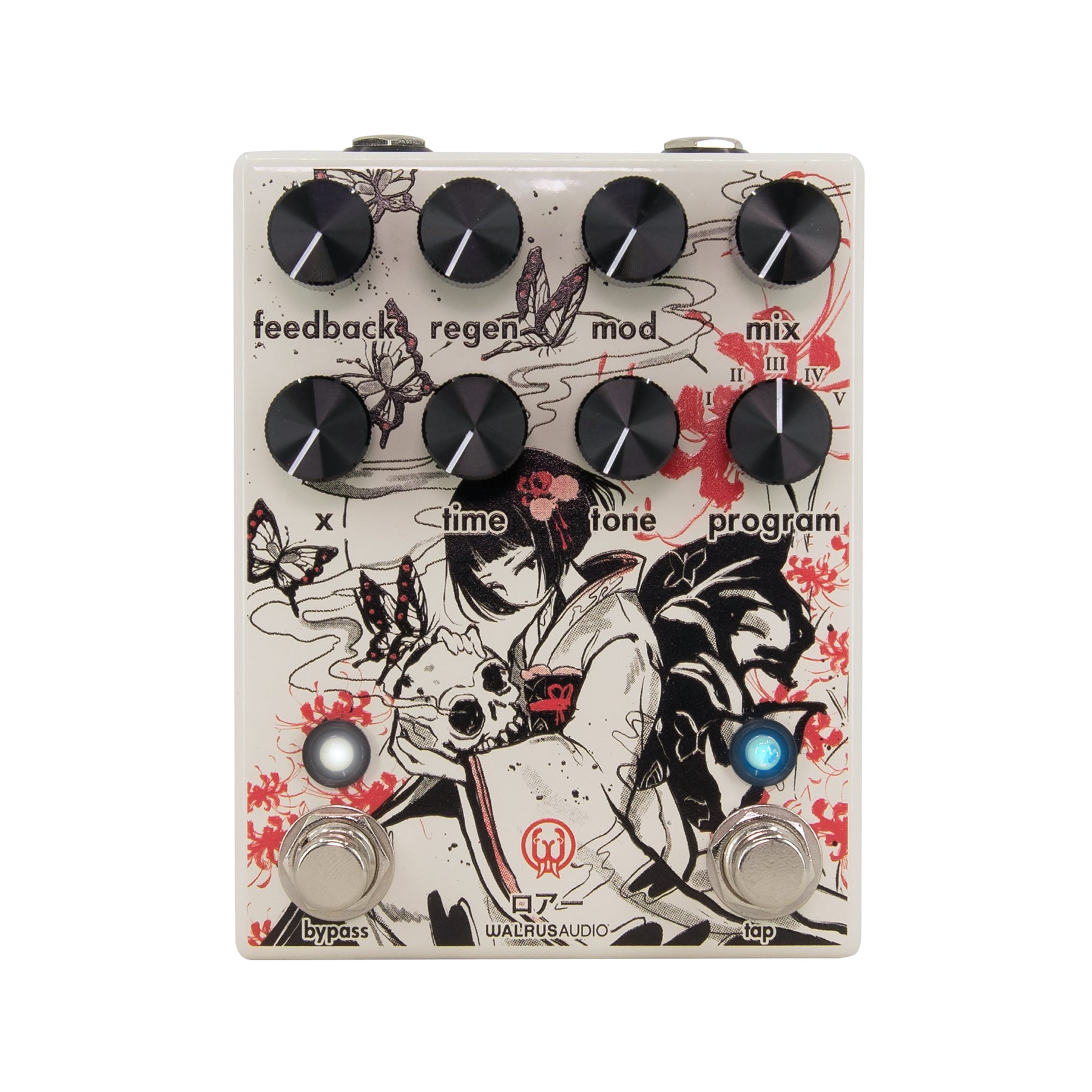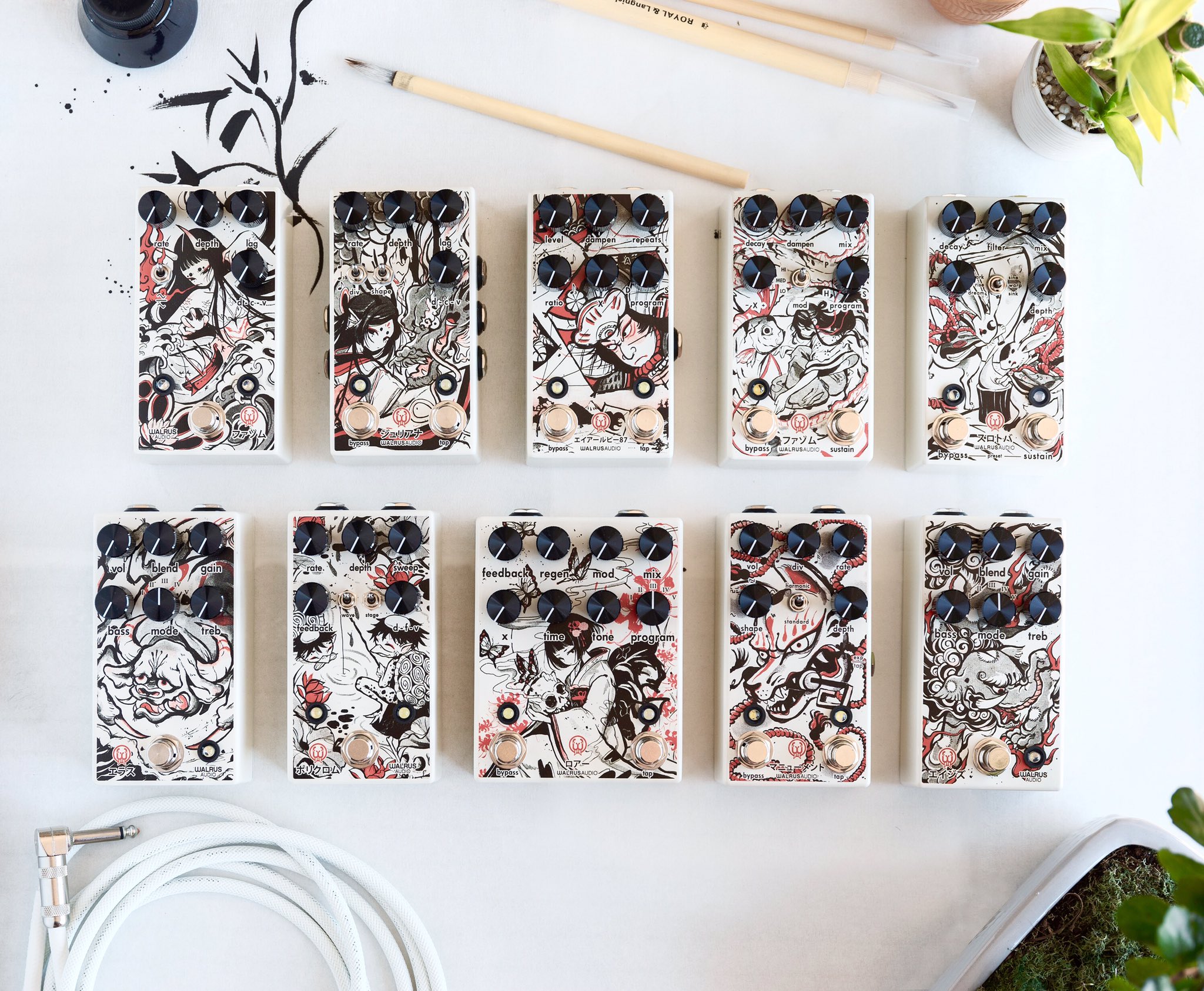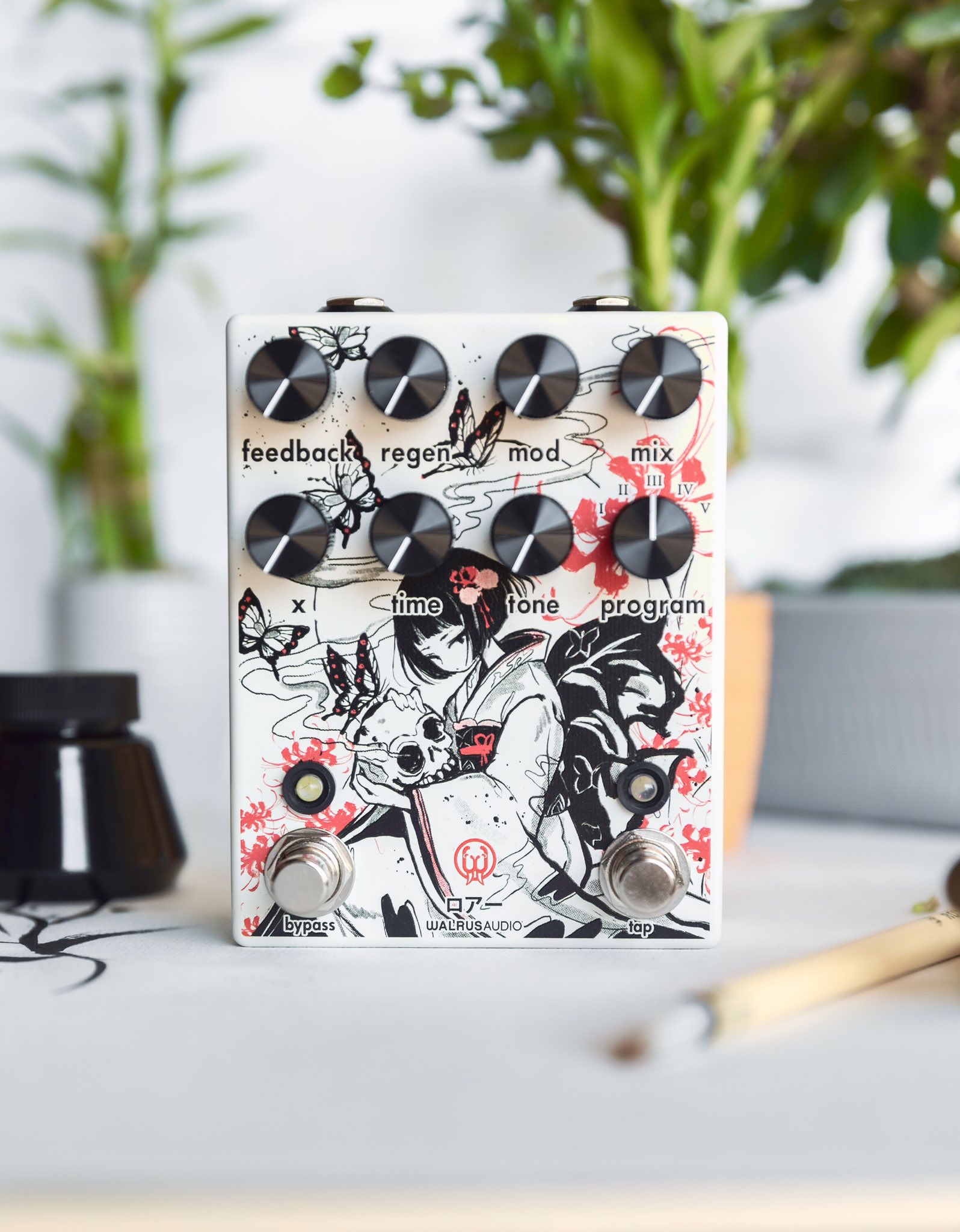Lore Reverse Soundscape Generator - Kamakura Series
Analog Feedback Paths
The Lore employs two analog feedback paths which allow each program to incorporate a unique mix of affected and unaffected feedback. The two feedback paths interact and build off of each other organically, offering the user a wide array of sounds and behaviors to experiment with.
Programs
I. Reverse Delay into Reverse Reverb
Program 1 combines reverse delay with reverse reverb with a focus on organically interacting feedback paths. Space and ambiance build as the signal is reversed, re-reversed, reverberated, and reversed again within the feedback network. Experiment with the X knob to control how reversed your delay trails are with left being least reversed and right being fully reversed. Lots of fun with big, eerie minor chords!
II. Reverse Delay into Octave Up Reverb
Program 2 is a "light reverb" that combines octave-up harmonic feedback with an expansive, airy, reverb tank to create a breathy, spacious ambiance. Use the Regen knob to introduce a playful shimmer into the reverb decay. Increase the X knob to control the decay of the reverb. It sounds especially great with delicate fingerpicking parts.
III. Reverse Delay into Octave Down Reverb
Program 3 is a "dark reverb" that combines octave down harmonic feedback with heavy filtering and harmonic distortion, to create a sound that is thick, rich, and murky. Use the Regen knob to bring a lower octave into the reverb decay. Increase the X knob to control the decay of the reverb. Add in some high gain or fuzz to alter the time-space continuum.
IV. Reverse Reverb into Forward Reverb
Program 4 is a dual reverb program, featuring reverse reverb into forward reverb, Dual harmonic feedback paths allow the user to dial in octave up and octave down, and time stretching allows for control of the size and character of the space. Perfect for instantly transforming guitar into rich ambient pads. Use the Feedback knob to add a lower octave to the reverse reverb. Conversely, use the Regen knob to add an octave up to the reverse reverb decay. Control the decay of the forward reverb with the X knob. To channel all things ambient, experiment with dynamic picking and strumming techniques with the mix fully wet for ethereal drones and pads.
V. Pitch Delay into Pitch Delay
Program 5 features two "dueling" pitch delays, which shift the input signal up and down in complementary or opposing directions, allowing the user to create intricate harmonic patterns in the feedback network. Behaves like a sequencer at higher delay times and like a harmonizer at lower delay times. Use Feedback and Regen knobs to control various amounts of pitched delay repeats. Use the X knob to change the order of the 4th, 5th, and octave intervals that the pitch delay steps through. Experiment with short staccato notes to create some very interesting rhythmic parts!
Controls
Feedback: Controls the amount of gain in the first feedback path:
- Programs 1, 2, 3: Controls the amount of delay repeats.
- Program 4: Controls the amount of octave down added to reverse reverb along with the reverse reverb feedback amount.
- Program 5: Controls the amount of pitched delay repeats.
Regen (Regeneration): Controls the amount of gain in the second feedback path:
- Program 1: Controls the feedback of the reverse reverb.
- Program 2: Controls the amount of octave up delay repeats feeding into the reverb tank.
- Program 3: Controls the amount of octave down delay repeats feeding into the reverb tank.
- Program 4: Controls the amount of octave up added to reverse reverb along with the reverse reverb feedback amount.
- Program 5: Controls the amount of pitched delay repeats.
Mod / Modulation: Controls the amount of modulation applied to the wet signal. Hold down bypass to adjust modulation rate with the Mod knob. You'll see the bypass LED blinking / flashing at the mod rate when this is active. Release bypass when it’s at the desired rate and the pedal will remember the setting.
Mix: Controls the amount of wet/dry mix. Fully left = dry, fully right = wet.
X: The X knob changes jobs depending on which program is selected:
- Program 1: Control how reversed your delay trails are: left is least reversed, right is fully reversed.
- Program 2: Controls the decay time of the reverb
- Program 3: Controls the decay time of the reverb
- Program 4: Controls the decay time of the reverb
- Program 5: Changes the order of the 4th, 5th and octave intervals that the pitch delay steps through
Time: Controls the delay time of the repeats for programs 1, 2, 3, and 5 and controls time stretching of the reverbs for program 4.
Tone: Controls the filtering of the tone – unique for each program:
- Program 1: Bandpass filter
- Program 2: Reverb lowpass
- Program 3: Reverb lowpass with added harmonic distortion
- Program 4: Reverb lowpass
- Program 5: Bandpass filtering on output and feedback loops
Program: Selects from the five available programs:
- Program 1: Reverse Delay into Reverse Reverb
- Program 2: Reverse Delay into Octave Up Reverb
- Program 3: Reverse Delay into Octave Down Reverb
- Program 4: Reverse Reverb into Forward Reverb
- Program 5: Pitch Delay into Pitch Delay
Tap Tempo: Tap to control delay or reverb time (depending on what program you're in). The tap LED will blink with the tapped tempo, or the tempo set by the Time knob.
- Program 1: Controls the delay time of the repeats
- Program 2: Controls the delay time of the repeats
- Program 3: Controls the delay time of the repeats
- Program 4: Controls reverb time stretching, creating a larger or smaller space
- Program 5: Controls the delay time of the repeats
Dive / Rise: Holding down the tap tempo switch will momentarily shift the clock rate of the pedal down or up and will hold it at that rate for as long as the switch is pressed. The direction of the dive can be changed by simply pressing bypass and tap simultaneously. A green LED over tap will indicate Rise is set and a blue LED will indicate that Dive is set.
Trails: The Lore can run in Trails or No Trails mode. In trails mode, when you turn the pedal off, the reverb / feedback decay dies off naturally. In No Trails mode, the decay is abruptly cut off when you turn the pedal off. The Lore ships with Trails mode on. To toggle between either Trails mode:
- Hold down the bypass switch while applying power to the pedal.
- After approximately four seconds the tap LED will rapidly blink for 1 second confirming you have changed trails modes.
- A rapid green LED confirms you are in Trails mode. A rapid red LED confirms you are in No Trails mode.
- Repeat the process to changes modes again.
Description
Illustrated by Crisalys, the Kamakura series combines a beautiful mashup of her unique style of illustration with traditional Sumi-e art. Beginning in February of 2022, we partnered with Crisalys to take on the arduous task of creating 10 unique pieces of art by drawing inspiration from traditional Japanese folklore. Not only did she absolutely crush that, but she found ways to make the art still share similar themes to the pedal’s original art concepts.
The pedal names are all translated to Katakana by translator, Baylor Wilson and our own Japanese distributor, Takahiro Kaneko. Takahiro served as a cultural advisor and played an integral part in developing the context and translations.
Once upon a time, in a fairy tale world, there stood a hidden forest. On the eve of every full moon, magical and delicate sounds of light were heard bouncing and reverberating through the trees. These sounds carry artifacts of notes moving backward and stretching through time. They are referred to as... Lore.
Create the soundtrack to your storybook adventure with the Lore Reverse Soundscape Generator. Made up of five different programs, each utilizes different combinations of delay and reverb that feed into each other for time-warping ambient creations. Featuring two DSP chips running in series, each with their own analog feedback path, the Lore takes you on an adventurous journey rich with themes of reversing, time-stretching, pitch-shifting, and vast ambiance.
- The original Lore comes coated in a muted green enclosure with Cream, Orange, brown and dark green ink with art by David Hüttner.
- The die-cast enclosure’s exact size is 3.62” x 4.79” x 2.25” including knobs.
- Buffered bypass.
- Power requirements are 9VDC, center negative (300mA minimum).
- The use of an isolated power supply is recommended for powering all Walrus Audio Pedals.
- Daisy chain power supplies are not recommended.
- Power supply not included.
Product Manuals
Guides
Assets


